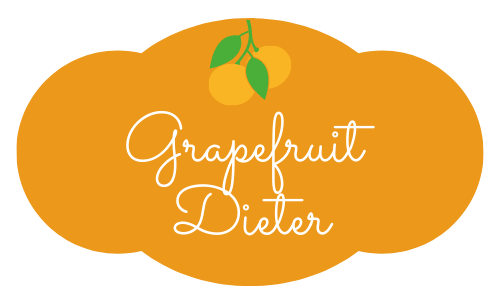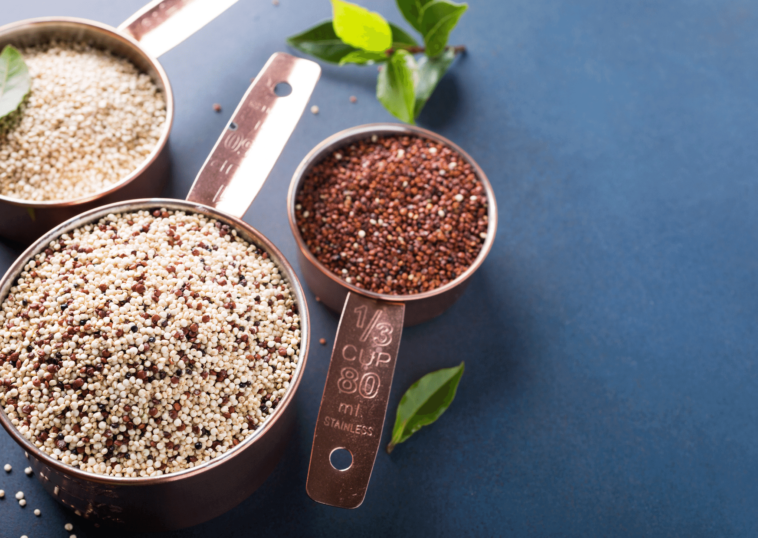Quinoa is considered a gluten-free food, making it an attractive substitute for wheat products for people with celiac disease. Its protein content is much higher compared to other pseudo-grains, and it contains all the essential amino acids.
Quinoa is believed to activate metabolism and reduce appetite, making it a great grain replacement for people who want to lose weight. Better than other grain products, quinoa helps burn the calories ingested while prolonging the feeling of fullness after a meal. Read on to explore more about the benefits of this super food.
What is quinoa?
Quinoa or quinoa ( Chenopodium quinoa Willd. ) as a plant of the Amaranthacae family, native to the Andean regions of the South American continent.
Quinoa is a pseudocereal, meaning a food that is obtained through the seeds of the plant’s flower. The quinoa plant can grow in humid areas and supports temperatures from -4 ° C to 38 ° C. (1)
Due to its numerous benefits in terms of nutrition, FAO and other international organizations recommend including quinoa in meals both as a way to achieve the ideal healthy weight and to reduce hunger in the world.
In 2013, the FAO declared the year of quinoa as a way to promote the cultivation of this type of food and promote healthy eating rules.

Benefits of quinoa
Quinoa, an antioxidant source of fiber, vitamins, minerals, and has the highest content of vegetable proteins that is known. The benefits and properties of quinoa are:
- Does not contain gluten
- High content of vegetable proteins
- Average glycemic index
- High mineral content
- Rich in polyphenols
- High in healthy fats
- Preparing quinoa is easy
1. Does not contain gluten
Quinoa is gluten free. About 1% of the world’s population is gluten intolerant. For these people it is extremely important to find alternatives to wheat, barley and rye. One of the benefits of quinoa is that it is allowed for celiacs.
2. High content of vegetable proteins
The protein content of quinoa is higher than any other plant food. Quinoa contains around 15% protein, and its amino acid composition is better balanced than that of most other grains, such as millet, sorghum, rice, wheat, and corn.
This is considered one of the most important benefits for vegetarians and vegans.
3. Average glycemic index
Another benefit of quinoa is its medium glycemic index. 150 grams of cooked quinoa has a glycemic index of 50. This is explained due to its high fiber content; about 7% of its weight. Due to this fact, it is considered a recommended food in a diet for type 2 diabetics.
4. High mineral content
100 g of quinoa covers the RDA for manganese, 49% magnesium, 25% iron and 21% zinc (1) . The lack of zinc is one of the most frequent in nutrition since it is a difficult mineral to find.
5. Rich in flavonoids
Quercetin is the main flavonoid in quinoa. This type of molecule is classified as a natural antioxidant. Among other things, one of its benefits is to neutralize the action of free radicals and prevent the development of cancer cells.
6. High in healthy fats
Quinoa contains a healthy fat content equal to 7% of its weight. Like chia seeds, the presence of Omega-3 fatty acids stands out, its content is approximately 80 mg in 100 g of dry cereal.
7. Cooking quinoa is easy
You don’t have to be a kitchen expert to cook quinoa. For a glass of quinoa you need two glasses of water. Like all shelled grains, it must be soaked and pre-washed with water. One of its benefits in the kitchen is that it is easily cooked.
Quinoa – nutrients in 100 g
The following table of nutritional value was extracted from the USDA database. The nutrients contained in 100 g of quinoa are:
| Water | 13.3 g |
|---|---|
| Energy | 368 Kcal |
| Protein | 14.1 g |
| Total fat | 6.1 g |
| Carbohydrates | 64.2 g |
| Fiber | 7 g |
| Minerals | |
| Calcium | 47 mg |
| Iron | 4.6 mg |
| Magnesium | 197 mg |
| Match | 457 mg |
| Potassium | 563 mg |
| Sodium | 5 mg |
| Zinc | 3.1 mg |
| Vitamins | |
| Vitamin C | 0.4 mg |
| Thiamine | 0.3 mg |
| Riboflavin | 1.5 mg |
| Niacin | 0.5 mg |
| Vitamin B6 | 184 µg |
| B12 vitamin | 1 µg |
| Vitamin A ug | 14 UI |
| Vitamin A, IU | 2.5 mg |
Table of nutritional value of quinoa – 100 g . Sources (1)
As can be seen in the table, quinoa is a very complete food and you’ll not go wrong to add it in your cart when grocery shopping.
Carbohydrates
The carbohydrates in quinoa are complex carbohydrates. These types of molecules deliver energy slowly and gradually. Something essential for people with a tendency to diabetes or who suffer other disorders related to the metabolism of insulin. WHO recommends that up to 60% of total calories come from this energy source.
Protein
Quinoa is the food with the highest protein content of plant origin. No other cereal or pseudoceral surpasses quinoa neither in quantity nor quality of protein. 200 g of quinoa provides about 28 g of protein, a quarter of the recommended amount of protein per day.
Fats
Quinoa is considered a low-fat food. 100 g of quinoa provide only 6 g of fat. Compared to the 30 g that a steak can provide, it is a really low value. The fats in quinoa are fundamentally monounsaturated; a type of fat associated with improved cardiovascular health.
Quinoa vs rice vs wheat
The main difference between quinoa and cereals is its amino acid profile. This pseudocereal contains a high content of essential amino acids: lysine, glycine and tryptophan. Fundamental compounds for the functioning of the nervous and muscular system.
When comparing quinoa to rice, it’s not just about the nutrient content ; but where they are. In rice the amino acids are concentrated in the husk. When processed industrially, rice loses most of its properties. In the case of quinoa, the amino acids are found in the nucleus by which they are maintained. (1)
If we confront quinoa with wheat, the first thing that should be highlighted is the presence of gluten. Unlike wheat, quinoa does not contain this protein so it is a food allowed on a gluten-free diet .
Other nutritional differences are a higher content of healthy fats and proteins, in quinoa the values are up to 5 times higher. (2)
How to cook quinoa?
Cooking quinoa as a main dish takes just 20 minutes. You can combine it with vegetables: zucchini, peppers, tomatoes; a source of protein: meats, tofu, or cheeses; and healthy fats: olive oil, coconut oil, or chia oil.
100 g of quinoa are boiled in 200 mL of water for 20 minutes. Vegetables and / or meat are sautéed with the oil. The quinoa should be drained and then combined with the vegetables and spices.
Is quinoa a cereal?
No, quinoa is a pseudocereal. That is, although its production is similar to that of cereals, its grains are obtained from flowers. It is also important to know that since quinoa began to be cultivated for industrial purposes, genetic modifications were made to the original plant.
What we know today as quinoa is a variety of plant and seed of larger sizes. Just as pigmentation levels have been modified. (3) In health food stores you can buy different types of quinoa: green, red or black.
Where to buy quinoa?
Quinoa can be purchased in most supermarket chains as well as online stores and health food stores. Its price depends on the country although its yield is high, it is also a food that causes long-term satiety.
We recommend buying organic quinoa. The organic foods have the advantage of not using any synthetic chemicals in their production.
Currently the leading country in the export of this food is Bolivia. (1) Followed by Peru and Ecuador. The main importing countries of this pseudocereal are: the United States (45%), France (16%), the Netherlands (13%), Germany, Canada, Israel, Brazil and the United Kingdom. (1)



